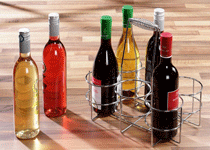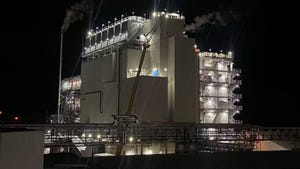Young wine keeps old look with new PET bottles
A PET packaging supplier says it this year has been tasked to supply 45% more bottles for wine than in 2009, including a doubling of the order for PET bottles for this year's Beaujolais Nouveau vintage, underlying the increasing welcome PET is finding among wineries and their customers.
November 24, 2010
A PET packaging supplier says it this year has been tasked to supply 45% more bottles for wine than in 2009, including a doubling of the order for PET bottles for this year's Beaujolais Nouveau vintage, underlying the increasing welcome PET is finding among wineries and their customers.
|
APPE says demand for its PET wine bottles leapt 45% this year. |
The processor, APPE (formerly known as Artenius PET Packaging), credits the demand growth to a growth in popularity of PET bottles for wine packaging. "The impressive growth in demand underlines consumer acceptance of PET as a suitable pack format for wine," says Sylvain Houard, business development manager at APPE. "Our PET bottles enable the quality of the wine to be preserved while offering important benefits in terms of convenience and an improved environmental profile, both of which are important purchasing considerations among consumers."
Beaujolais nouveau is a red wine made from Gamay grapes produced in the Beaujolais region of France. After just a few weeks of fermentation, the Beaujolais nouveau is officially released for sale on the third Thursday of November.
Other recent successes for the company in the wine sector include a large order, it says, for both 750-ml and 187-ml bottles for a South African winery and the supply of 187-ml bottles for in-flight wines to two European airlines. Total PET wine bottle production for APPE during 2010 has grown by 45%, with stronger growth forecast next year.
Weight savings and prevention of breakage are major reasons for PET's popularity. The 750-ml PET bottle weighs 50g compared to the typical weight of a same size glass bottle of between 350-600g. Like glass, PET is a readily recyclable material. APPE includes an active gas-barrier system in its bottles to prevent any change in the wine's taste or quality.
The PET bottles echo the design of the traditional glass bottles and can be filled on the same filling lines and at the same speed as glass bottles, reports the processor.
APPE is owned by La Seda de Barcelona, Western Europe's largest supplier of PET. The processor has eight processing facilities (seven in Europe and one in Morocco) plus a PET recycling plant in France. It also runs eight processing lines co-located at customers' bottling operations. —[email protected]
About the Author(s)
You May Also Like



